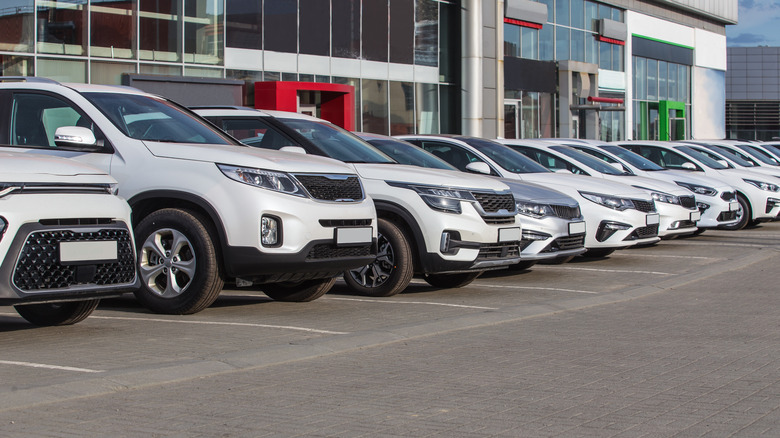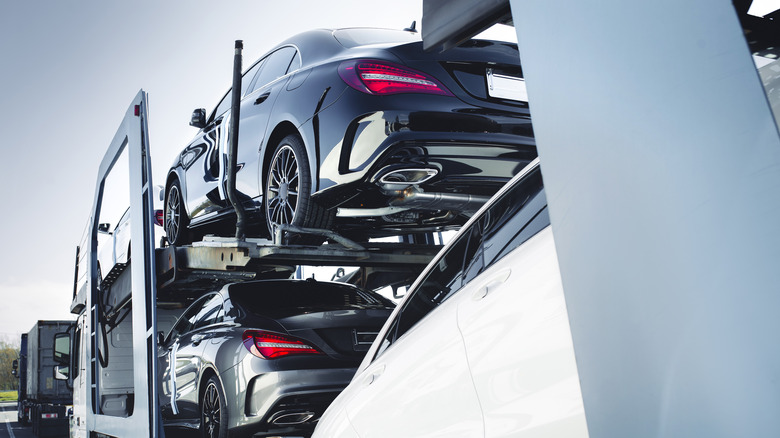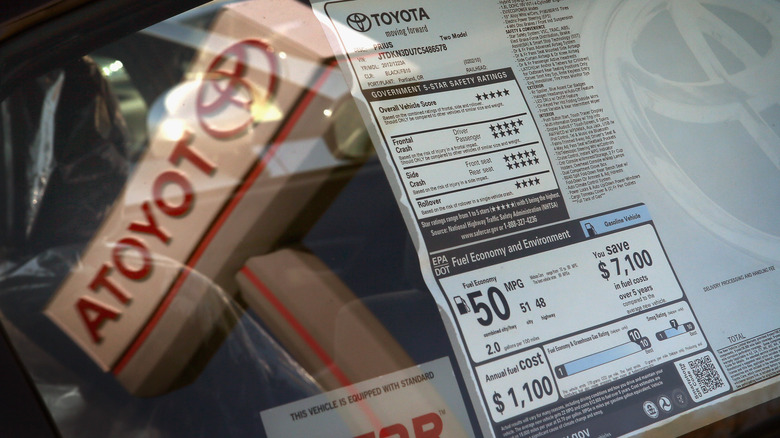What Is The Destination Charge On A New Car?
Before approaching your neighborhood auto dealership to look or search for a new ride, remember a few things. Kelly Blue Book warns new car shoppers of outrageous dealer markups caused by the ongoing chip shortage, supply chain disruptions, and rising interest rates. Price gouging is inherent in popular SUVs like the Jeep Wrangler, Porsche Macan, and Ford Bronco, and new car prices have increased by 4.4% since 2021. To put it bluntly, you're in bad shape to negotiate the MSRP or sticker price at the dealership, especially if you're eyeing a crossover or SUV.
Forbes claimed new vehicle pricing and used car wholesale prices are steadily normalizing since mid-2022, but bargain-hunting for a new vehicle would not be a walk in the park. The good news is there are ways to save money on a new car or EV amid looming global issues. Identifying the dealer cost or invoice price are good places to start negotiations, but the destination charge will always be part of the equation.
What is the destination charge?
The destination fee or destination charge (sometimes referred to as delivery fees, processing fees, handling fees, etc.) is an amount the auto manufacturer charges the dealership to deliver the new vehicle from the factory. In return, the dealership passes on the fees to the buyer. Manufacturers determine the destination charge by averaging the costs of shipping a vehicle from the nearest and farthest dealerships. Take note that the destination fees in Alaska or Hawaii are typically higher than in the mainland for obvious reasons (per Edmunds).
Is the destination charge negotiable? No. The MSRP or invoice price is typically negotiable except for the destination charge. Edmunds adds that customers who take delivery of their vehicle directly from the factory would still pay destination charges.
How much is the destination charge for a new car? The pricing depends on the manufacturer and the type of vehicle. Compact and midsize sedans could have destination charges below $1000 or up to $1,500. In addition, high-end luxury vehicles or supercars could demand $2,700 to $4,000 in delivery fees (per Motor Trend).
Does the MSRP include the destination charge?
According to Edmunds, the MSRP on the Monroney sticker (or window sticker) should not include the destination charge. Although window sticker formats will vary significantly across regions and automakers, dealerships should list the destination fees along with the MSRP.
Instead of forcefully negotiating a non-negotiable delivery fee, it's better to hedge your bets on the Manufacturer's Suggested Retail Price (MSRP) and the invoice price. According to Car and Driver, the invoice price is an estimated amount the dealer paid the manufacturer for a particular vehicle. Still, the difference between the MSRP and invoice would vary significantly based on many factors.
Since the manufacturer could only "suggest" an MSRP for a particular vehicle, dealerships could demand higher pricing above MSRP for the most in-demand vehicles on the lot. For instance, popular luxury SUVs, crossovers, or pickup trucks would have a more considerable discrepancy between the MSRP and invoice price. In contrast, more affordable compact cars would have a more negligible price difference.


